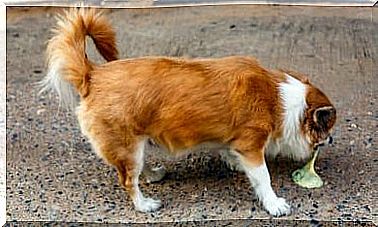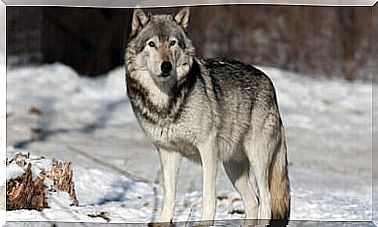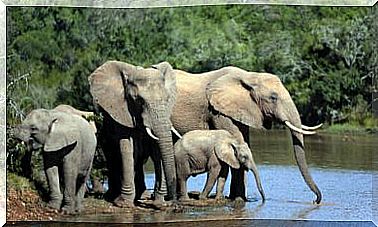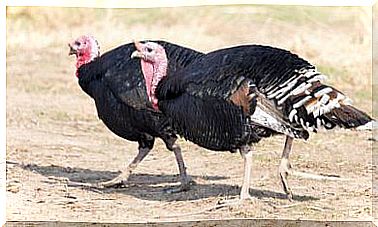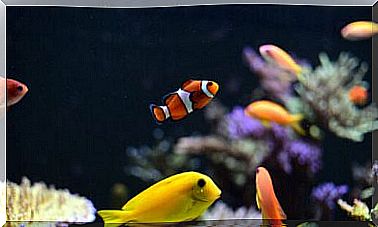Cats: How They Are Distinguished By Purring Or Roaring

It can be assumed that all cats are capable of purring and roaring. Domestic cats share almost 96% of their genetic makeup with tigers, a fact that proves that there are huge similarities between domesticated and wild cats. So why can big cats roar and domesticated cats can’t?
Despite the great similarities between domesticated cats and their wild relatives, the former can only purr and the latter can roar. Here we will tell you what is known about the purrs and roars of cats.
The ability to make purrs and roars
The cat family ( Feidae ) is divided into two subfamilies: Panthera and Felinae . The first includes the 4 roaring big cats – lions, tigers, jaguars and leopards. The second subfamily includes cats that can only purr, such as the domesticated cat, lynx, cheetah, puma and other small wild cats.
Roaring cats cannot purr and purring cats cannot roar. The puma is the largest of the small cat species, while the tiger is the most imposing of the 4 roaring big cats.
It all comes down to a little bone
All species belonging to the Felidae family share a lot of instinctual behavior. In general, they behave the same way towards food and use a butt as a compliment. All cats, regardless of their size, hiss, howl and grunt. Plus, regardless of the species, they love to play: wild cats are obsessed with boxes.
However, when it comes to the ability to roar, not all cats can do this, due to a small bone called the hyoid. This bone can be defined as a U-shaped bone structure in the throat, which is located above the larynx.

The difference between purring and roaring
The hyoid bone is different in cats that purr or roar. In roaring cats, the hyoid is flexible and, together with a specialized ligament that stretches, allows these animals to produce a wider range of tone.
As air passes through the vocal cords, the ligament stretches, and the more it stretches, the deeper and more intimidating the tone produced. In cats that do not roar, the hyoid is a hard, completely calcified bone.
The shape of the vocal chords also matters.
The account of a single feline shed new light on the roar: the snow leopard has a flexible hyoid but cannot roar. Analysis of their characteristics led to a second definitive distinction between cats and tigers or lions: the vocal cords in roaring cats are much thicker, fleshy and square in shape.
The square shape of the vocal cords helps the tissue around the cords to resist stretching. This gives roaring cats a much deeper sound by using less lung pressure to produce the sound, which can be as powerful as 114 decibels. The roar of an adult lion can be heard from 5 miles away.
Purring cats have much finer strings. These structures have specialized folds, which divide and vibrate during inhalation and exhalation, but limit their range of tone and make the ability to roar impossible. Domesticated cats purr at a power of 25 decibels.
What is purring for?
The frequency with which the cat purrs corresponds to the frequencies established in human therapeutic medicine. This means that bone tissue responds to these frequencies to regenerate.
So there is a theory that the cat’s purring is a kind of self-healing mechanism. It is believed to have developed as a low-energy way to keep the cat’s bones and tissue in good condition while resting. Purring can even have an analgesic effect.
This could explain the fact that sick house cats tend to purr more than normal. It is also common to observe that recovery is greater and complications are less frequent in cats that purr.

An Extended Benefit to Cat Owners
Anyone who has a cat knows that petting this animal is a way to relieve stress. There is a scientific report which concluded that people who live with felines are less likely to die from cardiovascular disease compared to those who do not have cats. This is a 1/3 reduction in the risk of having these pathologies!
Currently, it is speculated that this beneficial effect may be associated with exposure to the cat’s purring. Now you know the reasons why purring is a good thing, and you’ll be happy if your cat presents you with this act.


